Haubitz+Zoche
Eutropia
<a href="http://www.haubitz-zoche.de/public-art">← back to public art</a>
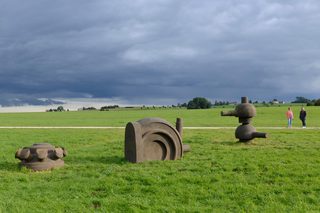
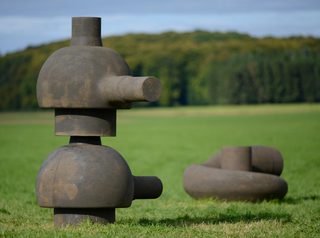
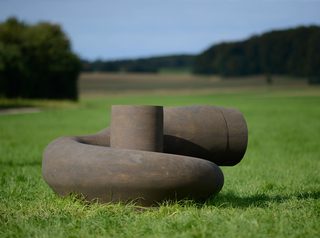
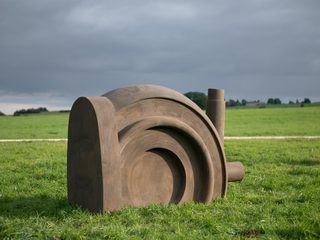
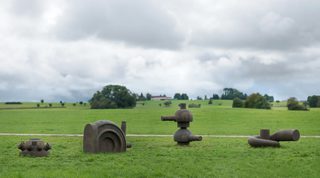
enter text here
enter text here
Die Unsichtbaren Städte: eutropia
Sand, Furanharz, Stahl, Höhe 0,80 - 2,20 m; SZ, Ausstellung Interim (Bundeskulturstiftung),
Schwäbische Alb, 2017
Mehrere Skulpturen aus Sand stehen wie Fremdkörper auf einer Wiese. Die Formen wecken Assoziationen an architektonische Modelle, ihre Formensprache erinnert an das Design von Industrieobjekten oder an kryptische Artefakte einer unbekannten Zivilisation.
Stefanie Zoche greift mit dieser Arbeit den Gedanken des Readymades von Duchamp auf, doch anstatt bekannte Objekte – wie den Flaschentrockner oder das Urinal – in einem white cube auszustellen, transferiert sie tonnenschwere industrielle Sandgussformen, wie sie z.B. für Gussteile einer Windkraftanlage oder einer Turbine verwendet werden, in den öffentlichen Raum, konkret gesagt: auf eine Wiese in der Schwäbischen Alb. Bei den Objekten handelt es sich um sogenannte Sandkerne, die beim Metallguss den Hohlraum im Inneren eines Werkstücks formen. Es sind also Materie gewordene Lufträume.
Durch die Kontextverschiebung entsteht eine Loslösung von dem ursprünglichen funktional-technischen Zusammenhang und eine offene Lesbarkeit, die Fragen zum Verhältnis des Menschen zur Natur aufwirft. Durch die eigens für diese Arbeit entwickelte Klanginstallation Lamento Industriale des Komponisten Rainer Bürck entsteht ein weiterer Resonanzraum.
enter text here
Invisible Cities: Eutropia
Sand, furan resin, steel, height 0.80 - 2.20 m; SZ, exhibition Interim (Bundeskulturstiftung),
Swabian Alb, 2017
Several sculptures made of sand stand like foreign bodies on a meadow. The shapes evoke associations with architectural models, their formal language recalls the design of industrial objects or cryptic artefacts of an unknown civilisation.
With this work, Stefanie Zoche takes up the idea of Duchamp's readymade, but instead of exhibiting familiar objects - such as the bottle dryer or the urinal - in a white cube, she transfers industrial sand casting moulds weighing several tonnes, such as those used for castings of a wind generator or a turbine, into public space, specifically: onto a meadow in the Swabian Alb. The objects are so-called sand cores, which form the cavity inside a workpiece during metal casting. They are therefore air spaces that have become matter.
The shift in context creates a detachment from the original functional-technical context and an open readability that raises questions about man's relationship to nature.
The sound installation Lamento Industriale by the composer Rainer Bürck, developed especially for this work, creates a further resonance space.
JavaScript is turned off.
Please enable JavaScript to view this site properly.